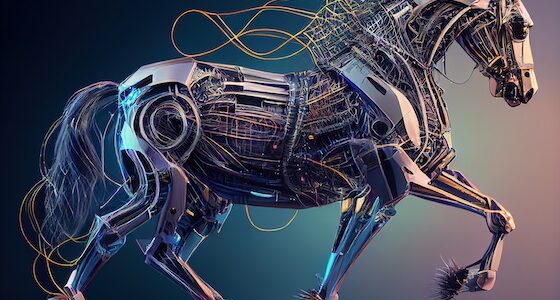
Researchers in robotics have for some time been studying the relationships of humans with robots. Areas of interest include how to persuade humans to trust robots, how well robots can manipulate humans, and that behavior in robot encourages people to agree to cooperate with that robot. Roboticist Eakta Jain of the University of Florida in Gainesville thinks that learning more about how humans interact with horses could help.
Biomimicry
Biomimicry, or making robots that copy animals or even human beings, is nothing new. We’ve written about robots inspired by kangaroos, elephants, insects, and octopi, among many others. But Jain isn’t so much suggesting that robots should be like horses.
Quadrupedal robots have been around for a while, and there is some evidence that they may be more stable than humanoid robots. The characteristic of horses that Jain has in mind is more subtle. Horses point with their ears toward things that interest them. Robots, she thinks, could have ear-like appendages that served the same function. In horses, that pointing can also be a sign of respect. Jain thinks robots could show human respect in the same way.
For robots, of course, this would be simulated respect.
Relationships
But simulated respect could be a good thing in human-robot relationships, Jain figures. She thinks that robots which could express trust and respect might get better — even, one could say, more trusting and respectful — relationships with human beings. Creating nonverbal communication signals for robots might be more effective than trying to improve their language-based communication. There have been pitfalls with that approach.
She compares horses to a fairly autonomous vehicle. A well-trained horse can carry its unconscious rider safely home, for example. That would be a worthwhile capability for an autonomous vehicle. Makers of self-driving cars could think of horses as their example. A good horse could be more useful as a role model than an ordinary car.
“There are no fundamental guiding principles for how to build an effective working relationship between robots and humans,”says Jain. “As we work to improve how humans interact with autonomous vehicles and other forms of AI, it occurred to me that we’ve done this before with horses. This relationship has existed for millennia but was never leveraged to provide insights for human-robot interaction.”
Jain hopes to change this. Improving the human-robot relationship could lead to greater safety in autonomous vehicles and even on the factory floor.
In the meantime, if you need to show a little respect to your Indramat motion control systems, we should be your first call. We’re Indramat specialists, and we can get your Indramat systems up and running fast with factory repair and reman. Call for immediate assistance.



